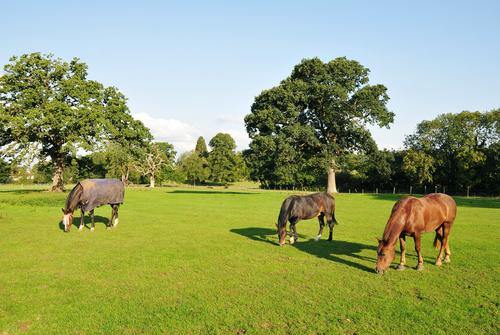
Spring signals the preparation of animals and pasture for summer grazing months. Both these factors require equal attention; grass needs to contain sufficient mineral and nutrient content to support healthy grazing and overall livestock health, and animals themselves need to be parasite-free and vaccinated.
Animal health
It’s important to carefully manage transition to spring and summer pasture grazing from winter stabling on a diet of forage and hay. Horses are sensitive to nutritional changes and can take weeks to adapt. That is why it’s often recommended to slowly introduce pasture grazing instead of a sudden and abrupt switch. A mineral lick such as the Horslyx Garlic Balancer is a great option to balance the gut and mitigate risk, combining nutritional balance with the added benefit of garlic – proven to reduce the problem of biting insects.
Paddock size and grazing rotation
Rotating grazing in the pasture can ensure over-grazing and permanent grass damage are reduced. Grass that has been ‘flash’ grazed grows back faster, which may provide benefits. However, it is worth bearing in mind that lush, green grass passes through horses quicker – ultimately reducing the nutrient absorption when digesting. It’s also important to consider whether your pasture is adequate for the number of horses you anticipate to graze it. For permanent grazing, The British Horse Society recommends 1 to 1.5 acres per horse, or one horse per 0.4 - 0.6 hectares – but of course weight, size, time of year and pasture quality are all factors that require consideration. Soil tests can determine the concentration of nutrients and ultimately the richness of grass. It is important to consider physical factors surrounding grazing pasture, too. These factors include removing obstacles and ensuring general biosecurity: water supply, a safe and accessible water trough, secure fencing, gates, footpath maintenance and the removal of any toxic plants.
Shelter
Although normally considered something stock use in the winter, a shelter is important to act as shelter from sun and flies. Again, the British Horse Society advise a minimum depth of 3.65m (12ft) and width of 3m-3.65m , which equates to 10ft-12ft. Each additional horse should be given an extra width of 1.5m or 5 ft. The roof should also have a minimum clear space to the eaves of 60 to 90cm, or 2 to 3ft.
StowAg have their own installation division which can create bespoke animal shelters built upon decades of experience and knowledge – not to mention drainage, feeding and water pipe solutions. Click here to take a look at our offering!
Of course, every equestrian facility has different requirements and needs – as do the horses themselves. If you’re looking for advice or recommendations on products, vitamin and mineral supplements, fencing or general maintenance expertise, get in touch with our team. With product experts, fencing specialists and SQP’s on hand; we’re here to help you keep the countryside working!
